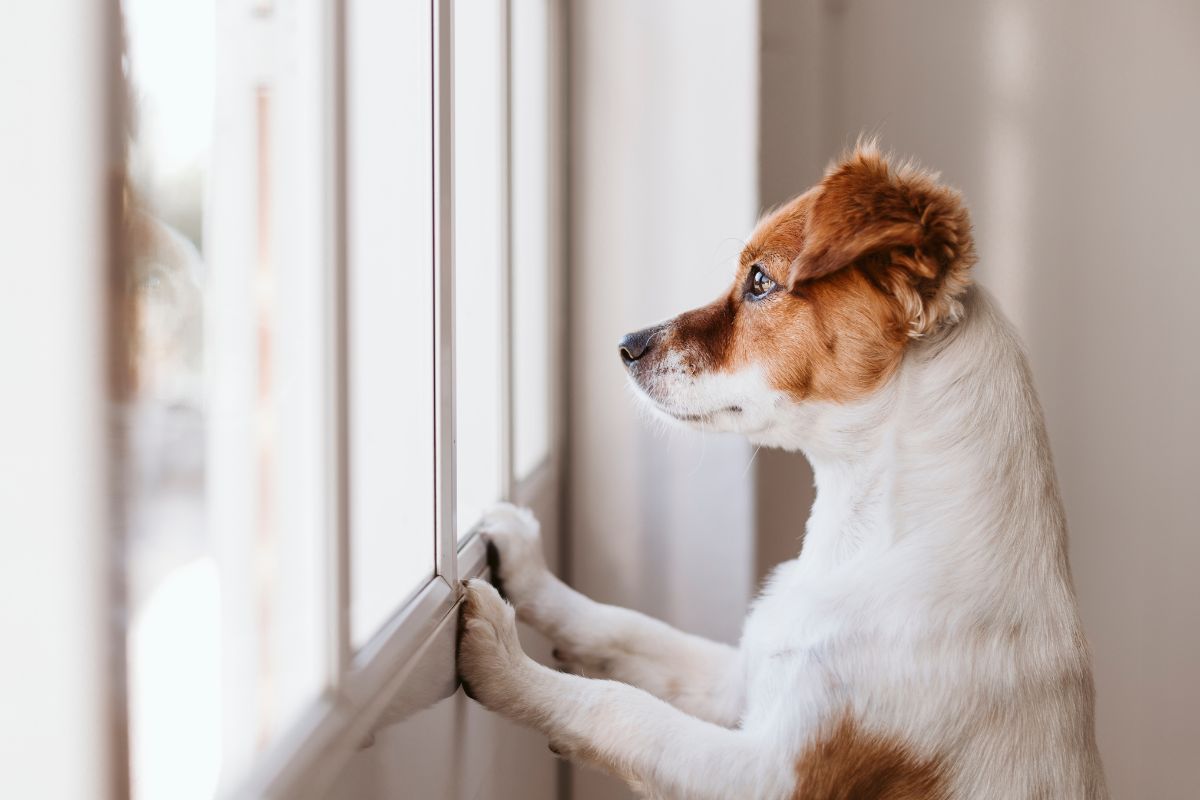Separation anxiety can be a big source of stress for both dogs and their humans. Here’s how to spot it and some tips to help soothe separation anxiety in your pup.
How to Spot and Soothe Separation Anxiety in Dogs
If your pup gets anxious when you leave the house, or even when you grab your car keys, you’re not alone. Separation anxiety is one of the most common behavior challenges dog parents face. Whether your dog cries, paces, or leaves a “surprise” on the rug while you’re gone, it’s usually not out of defiance, it’s stress.
With time, patience, and the right approach, you can help your dog feel secure and confident when spending time solo.
Recognizing the Signs of Separation Anxiety
Some dogs make their distress loud and clear, while others show it in quieter ways. Common symptoms include:
- Vocal distress: Barking, whining, or howling when you leave (or as soon as they sense you might).
- Chewing or digging: Doors, furniture, or baseboards often take the brunt of anxious energy.
- Accidents inside: Even the most housetrained dogs may forget their manners under stress.
- Drooling, panting, or licking: Anxiety often shows up as physical tension.
- Over-the-top greetings: If your dog greets you like you’ve been gone for years, it may be relief, not just enthusiasm.
If these behaviors only appear when your dog is left alone (or you’re getting ready to go) it’s a solid clue that separation anxiety is the culprit.
What Causes It?
Dogs are naturally social. When their favorite human disappears, even for a little while, some feel lost and unsure. Changes in routine like returning to the office after working from home, a recent move, or a family change, can trigger or worsen the behavior.
Rescue dogs, in particular, may struggle more since they’ve already experienced instability or loss.
Can Dogs Tell How Long They’ve Been Alone?
Yes and no. Dogs don’t watch the clock like we do, however, they use environmental changes like your fading scent, shifting light, and a growling tummy to discern the difference between a long or short absence.
How to Help Your Dog Cope
Here’s how to build your pup’s confidence and make alone time less stressful for both of you:
1. Take It Slow
Practice leaving your dog for short periods and build up gradually. Start with a few minutes, then extend to longer durations as they relax.
2. Stay Calm When Coming and Going
The bigger the goodbye, the bigger the anxiety. Keep departures and reunions casual and use a calm tone of voice. Avoid teary farewells or overly excited returns.
3. Make Alone Time Awesome
Offer a high-value treat or puzzle toy only when you leave. A peanut butter-filled Kong or a long-lasting chew can turn separation into something worth wagging about.
4. Burn Off Extra Energy
Physical activity and mental stimulation go a long way. A good walk, some fetch, or sniff-based games before you leave can help your dog relax while you’re gone.
5. Desensitize “Departure Triggers”
Your dog probably knows your routine too well. Try picking up your keys or putting on your jacket without leaving, so these cues lose their power.
6. Use Comfort Aids if Needed
Pheromone diffusers, calming chews, or gentle background music can make a big difference. Severe anxiety might benefit from professional guidance or even short-term medication under a vet’s supervision.
When to Call in the Pros to Soothe Separation Anxiety
If your dog’s anxiety feels intense or progress is slow, it’s worth consulting a professional trainer. Local experts like those at White Mountain College for Pets can create a personalized training plan to help your dog build confidence and trust through gentle, positive methods.
A Final Word
Separation anxiety doesn’t mean your dog is “bad”, it means they love you a little too much. With structure, empathy, and a sprinkle of creativity, you can help soothe separation anxiety and teach them that alone time isn’t scary and that you’ll be back soon!
